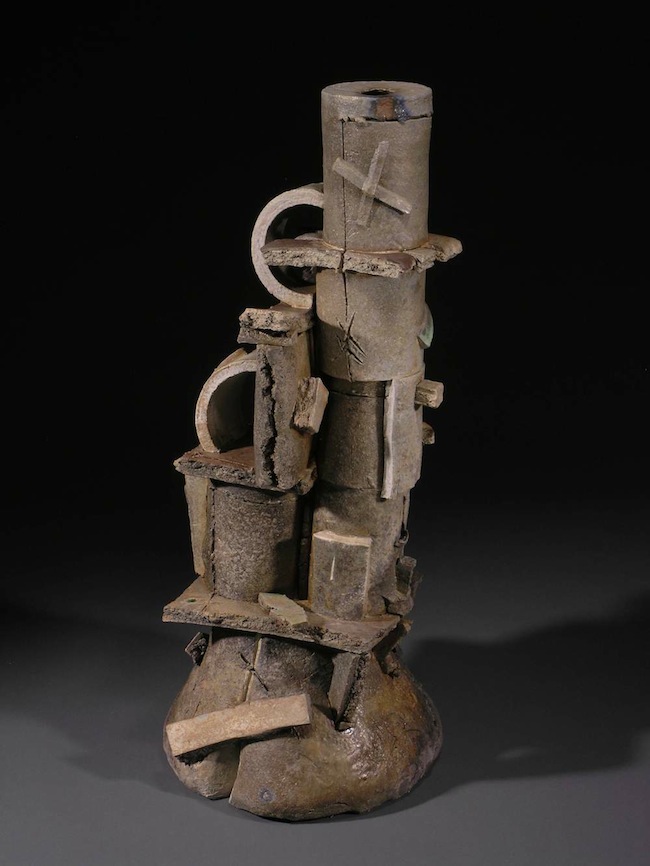Donald Lester Reitz (November 7, 1929 – March 19, 2014) was an American ceramic artist, recognized for inspiring a reemergence of salt glaze pottery in United States. He was a teacher of ceramic art at the University of Wisconsin–Madison from 1962 until 1988. During this period, he adapted the pottery firing technique developed in the Middle Ages, which involved pouring salt into the pottery kiln during the firing stage. The method was taught in European ceramic art schools, but largely unknown in United States studio pottery.In 1982, Reitz was in a serious car accident involving a truck and was hospitalized for several months. While recovering from his injury, he began to create a series of ceramic pieces that came to be known by a collective name, Sara Period. In 2007, Reitz suffered a heart attack and would undergo close to a dozen surgeries, including a valve replacement. He continued producing works with the help of studio assistants.Reitz died on March 19, 2014, at the age of 84 of heart failure and was eulogized by The New York Times and the American Craft Council. His works are featured in several museums including the Smithsonian Institution, American Museum of Ceramic Art, and Museum of Fine Arts, Boston.
Later in the 1980s and 90s, he became involved with wood firing ceramics as a collaboration with several artists, traveling to many ceramics studios to utilize different kilns for their varied effects. In 1988, he retired from the University of Wisconsin, but continued to work at his private studio in Clarkdale, Arizona.
Reitz was named on Ceramics Monthly's list of "greatest living ceramic artists worldwide" in 1988 and 2001. In 2002, he was awarded the American Craft Council's Gold Medal award.In 2007, he suffered a heart attack and underwent a series of eleven surgeries, including a valve replacement. However, he continued producing works for several more years, this time, with the help of studio assistants and collaborative artists. He would take elements they molded in cylindrical shapes, modify and assemble them into abstract sculptures, statuettes and table top pieces.Wikipedia
Later in the 1980s and 90s, he became involved with wood firing ceramics as a collaboration with several artists, traveling to many ceramics studios to utilize different kilns for their varied effects. In 1988, he retired from the University of Wisconsin, but continued to work at his private studio in Clarkdale, Arizona.
Reitz was named on Ceramics Monthly's list of "greatest living ceramic artists worldwide" in 1988 and 2001. In 2002, he was awarded the American Craft Council's Gold Medal award.In 2007, he suffered a heart attack and underwent a series of eleven surgeries, including a valve replacement. However, he continued producing works for several more years, this time, with the help of studio assistants and collaborative artists. He would take elements they molded in cylindrical shapes, modify and assemble them into abstract sculptures, statuettes and table top pieces.Wikipedia














No comments:
Post a Comment